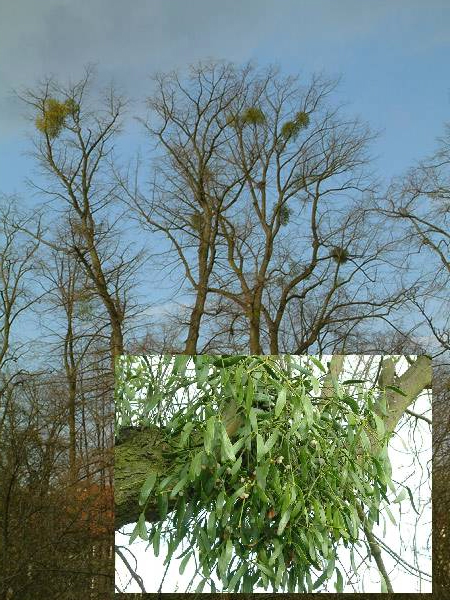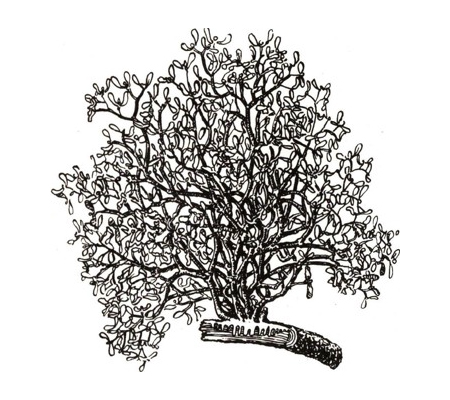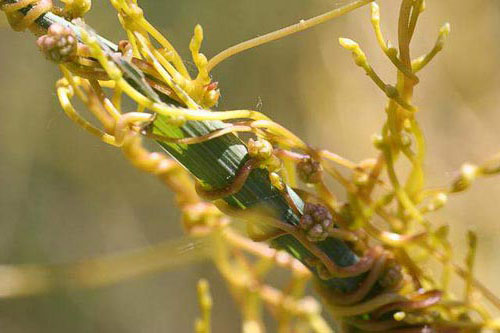One of these plants is mistletoe. To ensure its existence, the mistletoe lets special suckers deep into the woody tissues of the host plant on which it settled.

The same type of mistletoe can settle on different trees, but there are subspecies adapted only to conifers or only to deciduous species. As soon as a sprout of pine mistletoe begins its destructive activity on a pear, the tissues of the pear become dead and the mistletoe dies. But if the seeds of pear mistletoe got on the pear, then they will take root. Mistletoe lives on a pear from twenty to fifty years, sometimes in the end the pear dies, but not always.

A bush of mistletoe on a pear (comb-shaped suction cups of mistletoe

In the European part of Russia, and especially in the deserts, there is another parasite - broomrape. Desert broomrape species parasitize roots saxaul, pulling out from its roots not only water and mineral salts, but also organic substances. Once near the roots of the future host, miniature broomrape seeds germinate and take root in them. The broomrape grows rapidly, stretching out above the soil surface in the form of fatty inflorescences. Broomrape (other species) also parasitizes on agricultural crops - clover, alfalfa and many others.
